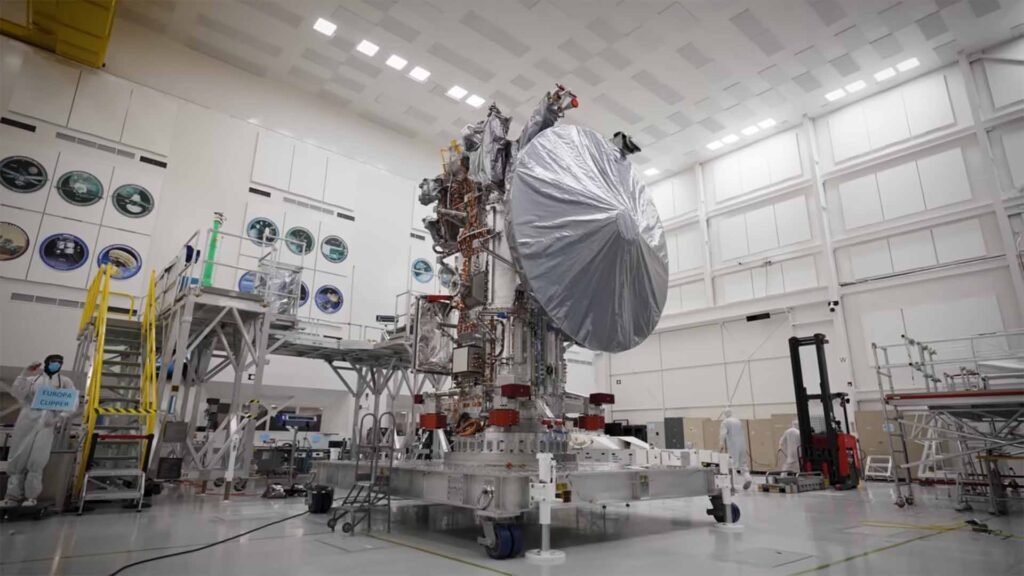The largest spacecraft NASA has built for a mission to another planet has been launched atop a SpaceX Falcon Heavy rocket. Lifting off from Kennedy Space Center, Florida at 12:06pm (local time) Europa Clipper will take more than five years to reach its destination – Europa.
Europa is a Jupiter moon with a massive subsurface ocean that may have conditions to support life. This is the primary goal of the mission – to determine if this is true.

“We’re ecstatic to send Europa Clipper on its way to explore a potentially habitable ocean world, thanks to our colleagues and partners who’ve worked so hard to get us to this day,” said Laurie Leshin, director, NASA’s Jet Propulsion Laboratory in Southern California.
“Europa Clipper will undoubtedly deliver mind-blowing science.”
NASA’s Galileo mission in the 1990s showed strong evidence that under Europa’s ice lies an enormous, salty ocean with more water than all of Earth’s oceans combined. Scientists also have found evidence that Europa may host organic compounds and energy sources under its surface.
Europa Clipper will travel 2.9 billion kilometres using gravity assists to Mars in four months and then back to Earth for another gravity assist flyby in 2026. After it begins orbiting Jupiter in April 2030, the spacecraft will fly past Europa 49 times. In fact, the spacecraft will orbit Jupiter 80 times.
There is no journey more dangerous for a spacecraft than one to the Jovian system and its dominant planet Jupiter. Radiation is the major concern for the Clipper as it navigates between Jupiter and its moons. The magnetic field of Jupiter is 20 times more powerful than Earth’s and it leads to the capture and acceleration of of particles which can cause havoc with scientific instruments.
The project team have designed a spacecraft that can survive the radiation onslaught while still being sensitive enough to gather data. Europa Clipper will ‘dip’ in and out of the danger zone, allowing it to process and transmit data in a ‘safer’ position during its orbits of Jupiter.
The spacecraft will begin conducting its science-dedicated flybys of Europa in 2031. It will fly as close as 25 kilometres to the surface. Europa Clipper is packed with nine science instruments and a gravity experiment, including an ice-penetrating radar, cameras, and a thermal instrument to look for areas of warmer ice and any recent eruptions of water.
Europa Clipper has the largest solar arrays NASA has ever used for an interplanetary mission. When the arrays are extended, the spacecraft spans 30.5 metres from end to end. When fully loaded with propellant, the spacecraft weighs 5,900 kilograms.
Australia has already played a role in the mission. After the spacecraft separated from the rocket ground controllers received a signal soon after, and two-way communication was established at 1:13pm (local time Florida) with NASA’s Deep Space Network facility in Canberra.